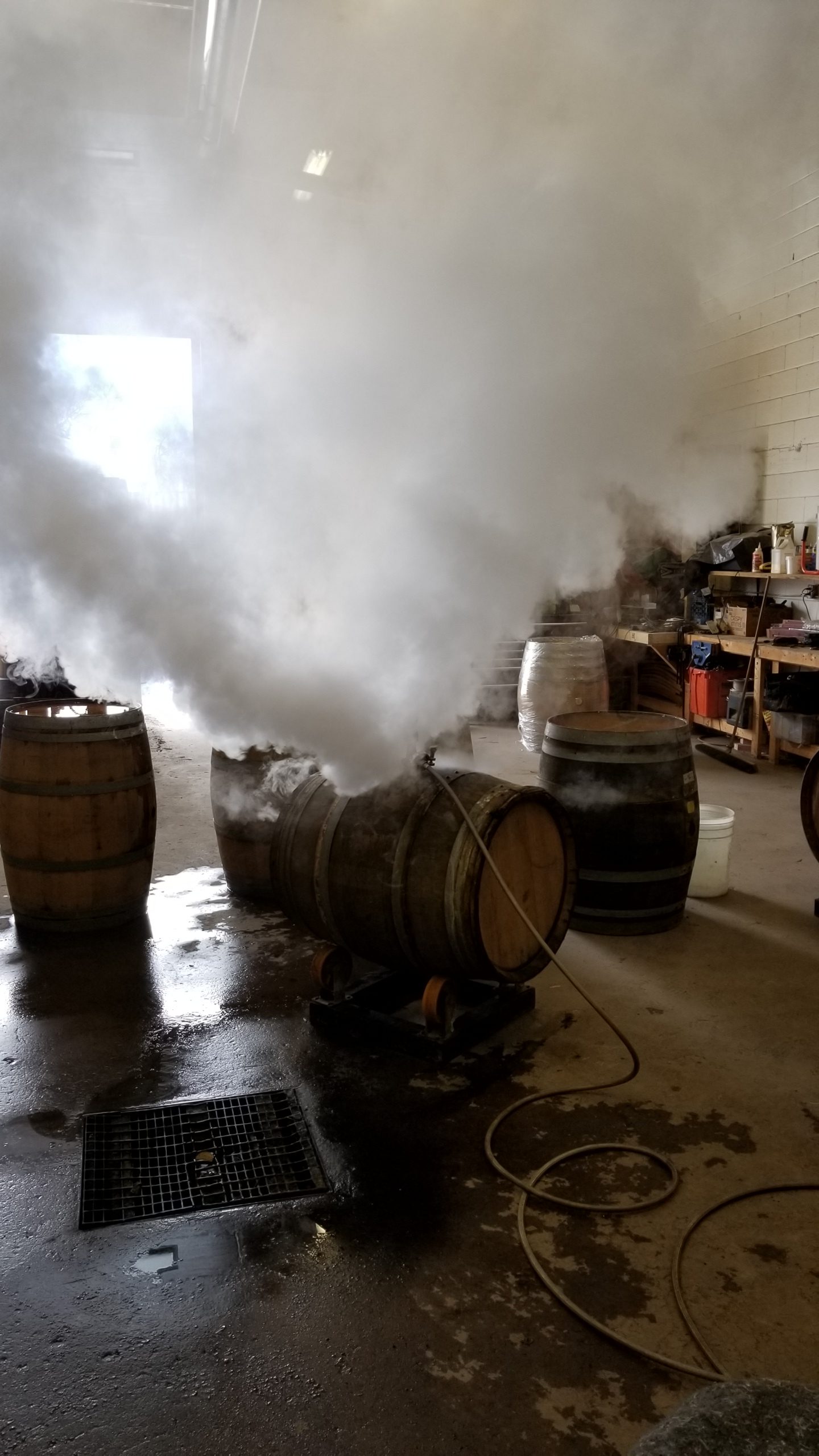
Barrels are living, breathing entities so you always need to think of them as contracting and expanding as the oak capillaries pull in oxygen and pull out alcohol. A wet oak barrel interior without any sanitization will lead to headaches down the road. So Damien R. Matthews, CEO, at DRM.reCoop advises you to practice good barrel hygiene to help keep your investment safe.
A lot of the time I’m asked by craft brewers how to prep a re-coopered or neutral barrel for beer before it’s filled. With craft brewers moving to oak barrels to up their game and beer flavor profile, it’s important to be armed with the right information for barrel care. We always tell brewers to use cold de-chlorinated water for their initial barrel leak sealing.
Hot water tends to leach out the previous barrel residuals or oak phenols, which is what you are paying for in the first place. Chlorinated water and white oak don’t get along as they can lead to contamination such as 2,4,6 trichloroanisole in the production of mold (cork taint) so be sure to use a filter for your water. It’s recommended to stand the barrel vertical and fill 1/3rd full.
At the same time you want to fill the exterior barrel heading with water and let stand. All barrels are different so as you are looking for barrel leaks. Some barrels leak seal faster than others. Do not let stand for more than three days. Filling a barrel completely full is a waste of water this is why we like to leak seal them vertically.
Once you have leak sealed the barrel, filled with your precious craft beer and drained the barrel …how do you care for it while it’s empty? There are many different answers to this question based on your fill schedule and possible remediation efforts. I’ve witnessed on countless occasions where a barrel was emptied and simply forgotten. Racked and stacked until it’s next use. It’s a good idea to keep your barrels stored indoors with sufficient humidity and out of direct sunlight. You want to keep the barrel hydrated and not allow it to get bone dry as you will need to tighten hoops and re pin on both sides of the barrel.
At DRM.reCoop our favorite preparation for recently emptied barrels is a cold-water gamajet followed by a 30ppm dose of food grade ozone gas prepared with medical grade oxygen. Ozone has a half-life of approximately 10 minutes based on ambient temperatures. It will give your barrel a 4-log sanitization and is good for four weeks before it needs to be done again.
The only gas more powerful than ozone for sanitization (not sterilization) are free fluoride ions which you don’t want to mess with as they are highly caustic. For craft beer barrels you can use sulphur dioxide gas but risk getting SO2 residue into your beer if the barrel has not been flushed prior to filling. It will keep your barrel contaminant free if you don’t have ozone.
At DRM.reCoop we employ to the use of dry vapor steam at 220F to sanitize barrels also. Steam does a wonderful job of hydrating a barrel and at the same time can remove some contaminants with the exception of volatile acidity (nail polish off note) While steam units are not cheap they can certainly safeguard your barrel investment over the long term.
We like to steam a barrel for up to ten minutes, let drain and air dry and then apply either SO2 or ozone gas internally. Seal up the bung and your barrel is safe. With any barrel program it’s imperative to have a set schedule to monitor your empty stored oak barrels to be on the lookout for any contaminants that may creep in over time.
There are chemicals that can be used for barrel storage with the presence of water in the barrel as they are being stored empty. While I am not a big fan of chemicals in oak barrels they are the cheaper method and do provide a good level of sanitization for empty barrels.
In the USA our favorite chemical is ProxyClean (Sodium Carbonate Peroxyhydrate) that is used by wineries and breweries. Anywhere from 8 – 24oz in five gallon solutions can be used in the barrel as it sits empty. This is followed up with a citric acid wash to neutralize the barrel and cold-water flush before using again for beer.
In Ontario we see wineries and breweries alike use citric acid and potassium metabisulphite solutions in their barrels for sanitization. This is a solution of one gallon of water, two teaspoons of potassium metabisulfite and one tablespoon of citric acid. Combined with water these two chemicals a weak SO2 gas is produced and it does produce some off odours so wear a respirator when mixing these chemicals. When you are ready to use your barrel again you must empty and flush the barrel enough so you do not notice any chemical off notes from the solution that was previously in the barrel.
Barrels are living, breathing entities so you always need to think of them as contracting and expanding as the oak capillaries pull in oxygen and pull out alcohol. A wet oak barrel interior without any sanitization will lead to headaches down the road. Practice good barrel hygiene to keep your investment safe!
